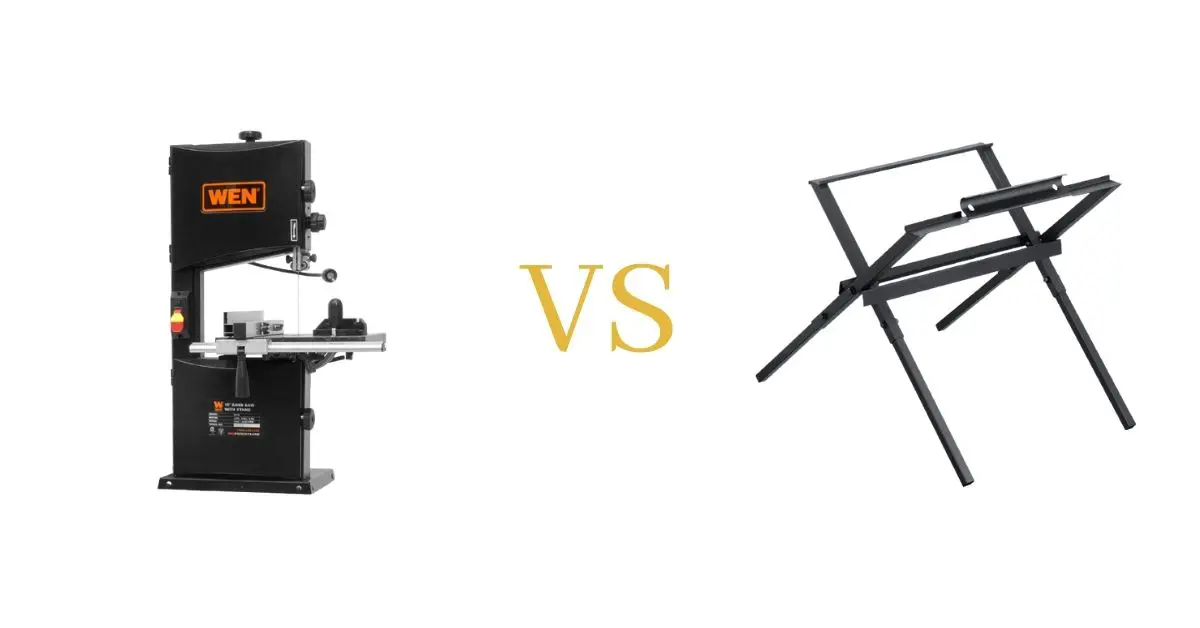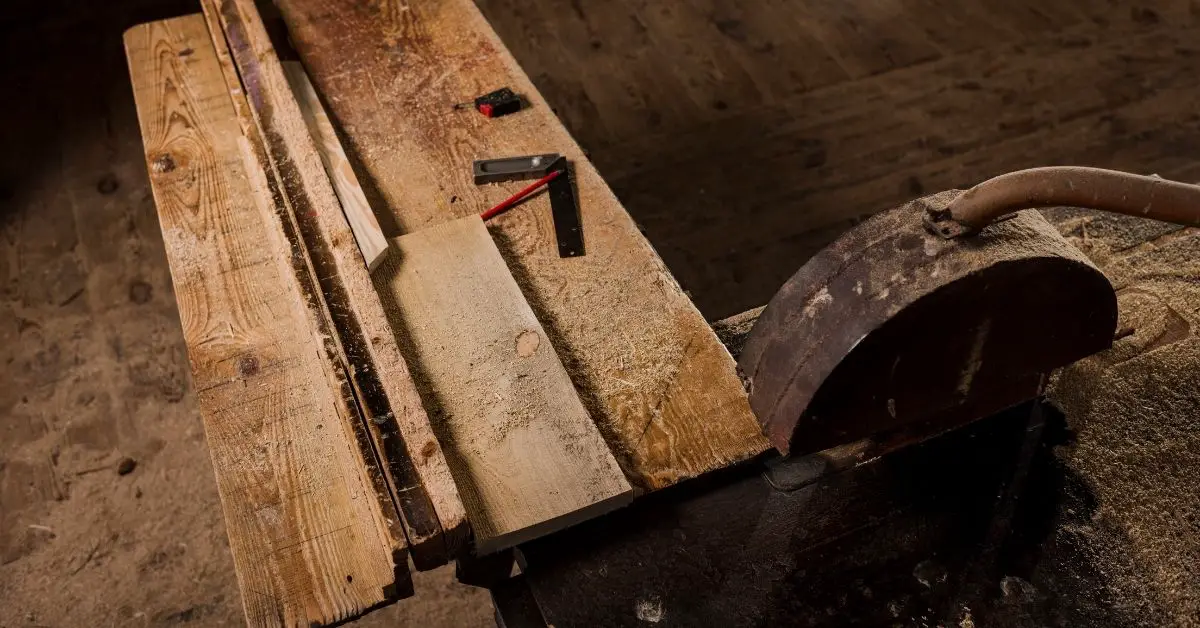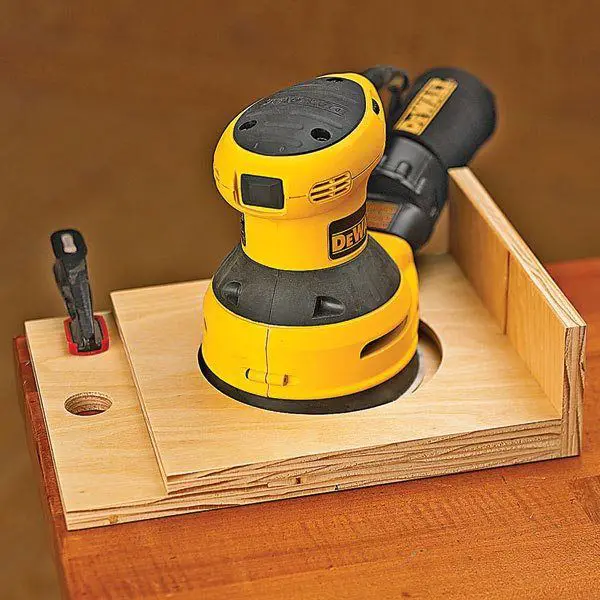Power Tools
Band Saw vs Table Saw
If you only had room for either a band saw or a table saw, which one would you choose? This band saw vs. table saw comparison seeks to shed light on the strengths and limitations of each type of saw.
The table saw, invented by Tabitha Babbit, is a master at making straight cuts and a foundational tool for furniture shops that dabble in projects which require cutting or ripping plywood and hardwood. On the other hand, the band saw uses a narrow, flexible band of steel stretched across two or three wheels to cut curves and odd shapes. With the right blade, a band saw can also make rip and crosscuts quite easily, and that’s where the dilemma begins.
Should you invest in a classic table saw, or will your woodshop be better off with a band saw? Let’s explore the pros and cons of each type of saw to answer that question.
The Benefits of a Table Saw
It Excels at Straight Cuts
By design, the table saw is great for making straight cuts. That makes it a woodshop fundamental, especially for cabinet and furniture specialists that need to cut hardwood and plywood to size or width.
It Has Safety Features Built Into it.
Most table saw blades have a forward/upward spinning action, making them dangerous because they can fling the workpiece right at you if you’re standing in front of the table while feeding it.
Nowadays, safety features like anti-kickback pawls, riving knives, blade covers, and splitters are built into it to prevent accidental kickbacks. Nevertheless, it would be best to always operate a table saw from the side to avoid unnecessary accidents.
Easy to Create Similar Results
With a table saw, all you need to do is set up the cut. Once you’ve got the configuration down, you can repeat it as many times as you need to since you’re only pushing wood into the saw. That makes table saws relatively easier to use, especially if when working on one type of project.
The Benefits of a Band Saw
More Cut Variety
A band saw isn’t typically the first choice for cutting straight lines, but it requires much less effort to make rip cuts if you fit it with the right blade. Unlike with a table saw, you won’t even need a reference edge to start your cut.
But the band saw is traditionally reserved for cutting curves and shapes into wood. Its narrow blade makes it ideal for such operations. It can also cut tapers with relative ease. However, its ‘secret’ superpower is arguably its ability to re-saw lumber, which allows you to shave off veneers or cut thick boards into thinner planks. That’s a must-have ability when working with expensive hardwoods.
Better Operational Safety
Even without safety features, a band saw is inherently safer than a table saw. Its blade is narrow and cuts in a downward motion. That ensures that the workpiece stays solidly on the table, giving you less to worry about in terms of kickbacks.
When Should You Get a Table Saw?
If you’re only going to need straight cuts, then a table saw should serve that purpose just fine. With so many of them equipped with multiple safety features, a table saw is the best option for making cabinets, furniture, and workpieces involving plywood and hardwood cost-effectively and efficiently.
When Should You Get a Band Saw?
If most of your work involves free-form shapes and curves, then a band saw is essential. Unlike table saws, which primarily handle “square work” like cabinetry, band saws are better suited for cutting odd shapes and curves, even when the lumber has no straight edges.
Best Table Saw and Band Saw to Buy This Year
DeWalt DWE7485WS Jobsite Table Saw
The 8 ¼-inch DWE7485WS Jobsite table saw comes with a stand, rack, telescoping pinion rails, and a 24.5-inch ripping capacity, which makes it capable of cutting through 4 x 8 plywood and OSB sheets without hiccups. It’s also remarkably accurate and smooth, courtesy of a motor that’s capable of 5800 RPM.
This corded electric table saw is perfect for tight spaces due to its compact size. Whether you’re looking for something easy to store, ship, or a little bit of both, you’ll find that it fits your requirements without forcing you to settle for less power.
It is also equipped with multiple safety features, one of which is the power-loss reset, which prevents accidental re-starts when your power gets interrupted while the tool is in the on position. That’s a safety feature worth investing in to make the workshop less accident-prone. It also has a blade brake that can be triggered manually or automatically.
Other standard safety features such as the anti-kickback pawl are available, not to mention a non-thru cut riving knife and a modular guard system that provides protection in multiple directions. Aside from the bare tool, you also get a stand, a fence, a miter gauge, a push stick, blade-change wrenches, and an 8 ¼-inch blade when you buy this table saw.
WEN 3962T 10-inch Band Saw with Stand
Apart from the stand, this 10-inch stand comes with a work light for improved cutting accuracy in dark conditions. A 3.5-amp motor powers the 20 by 25 by 58-inch tool and gives you two-speed settings to choose from; 1520 and 2620 FPM. It can cut up to six inches deep and has a maximum cut width of 9 ¾ inches, so the WEN 3962T can do some heavy-duty tasks.
It comes fitted onto a large 14 1/8-inch by 12 ½-inch table made from cast aluminum. This worktable can also bevel to 45 degrees for when you need to create joints. With this band saw, you can use any 72-inch blade measuring between 1/8 and ½ inches in size. Even though it comes disassembled, you won’t spend more than a few minutes getting it up and running, thanks to the provided manual and assembly tools.
When you buy this band saw, you get a 2-year warranty, a work light, and a 3-in-1 dust port, not to mention a miter gauge and fence, plus a 3/8-inch 6TPI blade.
Why You Should Trust Us
At Woodworking Tool Guide, we know one size doesn't fit all! We cater to every woodworker, from beginner to pro, with insights and recommendations tailored to your skill level, project needs, and budget. We take the guesswork out of choosing the right tools, whether you're tackling your first crafting a masterpiece for the ages. So grab your chisel, join our community, and let's build something amazing together!
Woodworking Tool Guide wasn't just born, it sprouted from a seed of passion for the craft. What started as a joyful exploration blossomed into a trusted online haven for fellow enthusiasts like you. We pour our love into meticulously chosen review selections, meticulous hands-on testing, and lab-backed insights, all to empower you with reliable, comprehensive information you can build on. So, grab your tools, trust our guidance, and let's build something beautiful together!
Passion-Driven Expertise
Our journey started with a shared love for woodworking. The team behind the Woodworking Tool Guide is comprised of individuals who are not just writers but passionate woodworkers themselves. This shared enthusiasm ensures that our content is crafted with a deep understanding of the craft and an authentic appreciation for quality tools.
Top Tool Guides Online
Woodworking Tool Guide has rapidly ascended to become one of the premier online destinations for tool guidance. Our commitment to excellence and the accuracy of our information has positioned us as a reliable source for both beginners and seasoned woodworkers seeking trustworthy advice on the best tools for their projects.
User-Centric Approach
Our content caters to every woodworker, from rookies just starting out to seasoned pros tackling intricate projects. We tailor our insights and recommendations to your skill level, project needs, and budget, ensuring you find the perfect tools to match your unique woodworking journey. So step into your workshop, grab your tool belt, and let Woodworking Tool Guide be your trusted companion as you craft your masterpieces.
Continuous Support and Innovation
Woodworking is an ever-evolving craft, and so is our commitment to supporting you. We are dedicated to bringing you the latest information on woodworking tools, techniques, and trends. Our team is actively working to expand our content and bring you more valuable insights, ensuring that you stay well-informed in your woodworking adventure.
Hands-On Experience
Ditch the endless research rabbit hole! At Woodworking Tool Guide, we believe in actionable advice, not armchair analysis. We get our hands dirty, putting every tool through its paces in real-world woodworking scenarios. Whether it's the precision of a table saw, the versatility of a router, or the tactile satisfaction of a handplane, we test for performance, durability, and user-friendliness. No more sifting through dry specs – we deliver practical insights you can trust to transform your woodworking dreams into reality.
Woodworking Tool Guide isn't just a review site, it's your trusted companion on the sawdust-filled path to woodworking mastery. Our expert team, led by veteran David Jones, meticulously tests and explains tools in terms you understand. We cut through the jargon, bias, and confusion with real-world insights and honest evaluations. Join our passionate community, where decades of experience, cutting-edge knowledge, and shared love for the craft come together to guide you every step of the way. So grab your chisel, buckle up, and let's embark on this exciting woodworking adventure, together!









